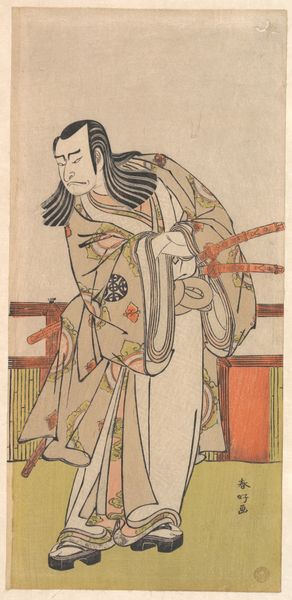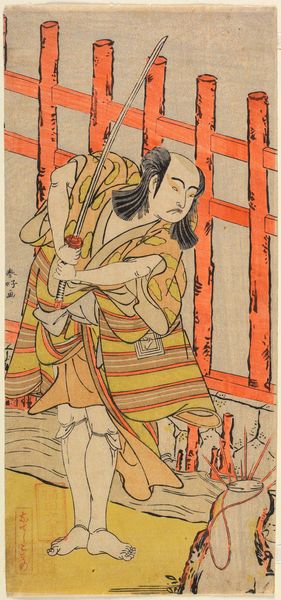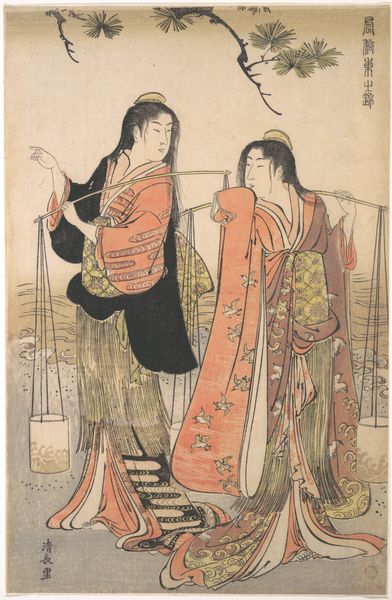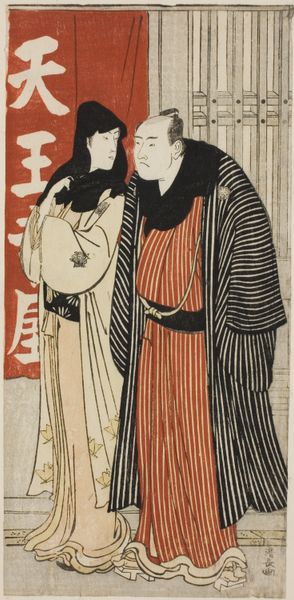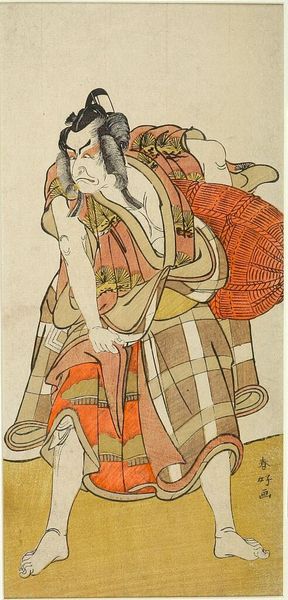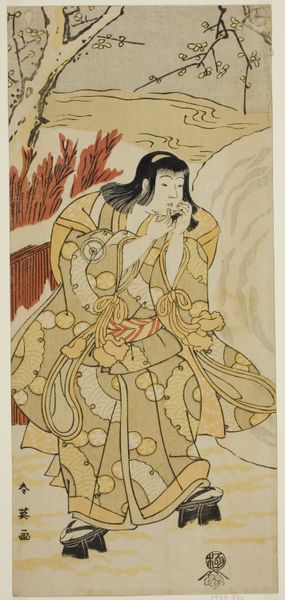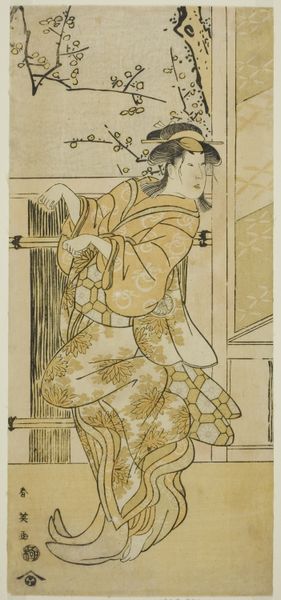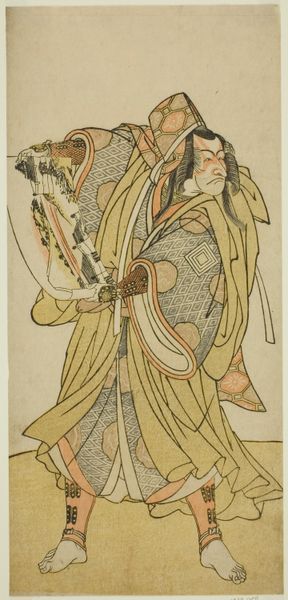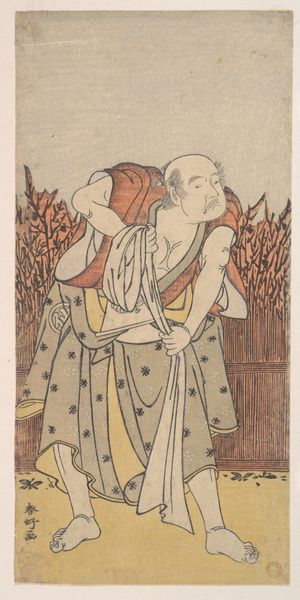
The Actor Sakata Hangoro III as the Guard Yahazu no Yadahei in the Play Otokoyama O-Edo no Ishizue, Performed at the Kiri Theater in the Eleventh Month, 1794 c. 1794
0:00
0:00
print, woodblock-print
#
portrait
#
ink drawing
# print
#
pencil sketch
#
asian-art
#
ukiyo-e
#
figuration
#
woodblock-print
#
genre-painting
Dimensions: 33.2 × 14.8 cm (13 1/8 × 5 13/16 in.)
Copyright: Public Domain
Katsukawa Shun'en made this woodblock print in 1794, depicting the actor Sakata Hangoro III in character on stage. Prints like these, made in Japan during the Edo period, weren’t simply commercial products but important social documents. Known as Ukiyo-e, or “pictures of the floating world”, these prints captured the period’s fleeting entertainments. Kabuki theatre was one such pleasure. It drew large crowds from different social classes, and the actors became celebrities. This print of Sakata Hangoro III is a kind of advertisement, a promotion for both the actor and the play. The print itself becomes a commodity to be collected and consumed, much like the spectacles it depicts. Historians use theater programs, diaries, and government records to understand the social world that made these artworks meaningful. What was the relationship between the actors and their audience? How did the government regulate popular entertainments?
Comments
No comments
Be the first to comment and join the conversation on the ultimate creative platform.
